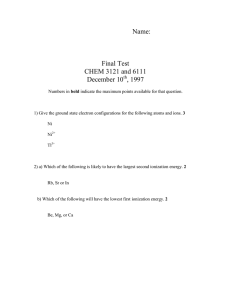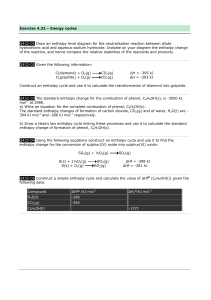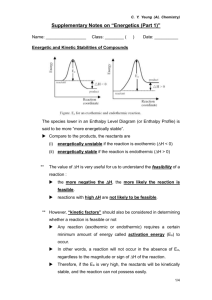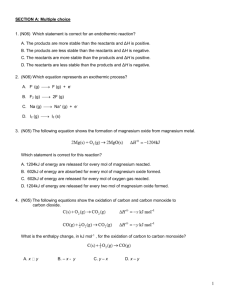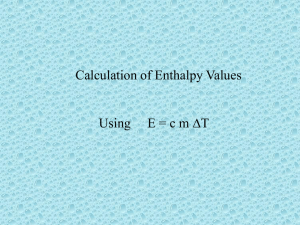Using bond enthalpies to calculate enthalpy changes of reactions
advertisement
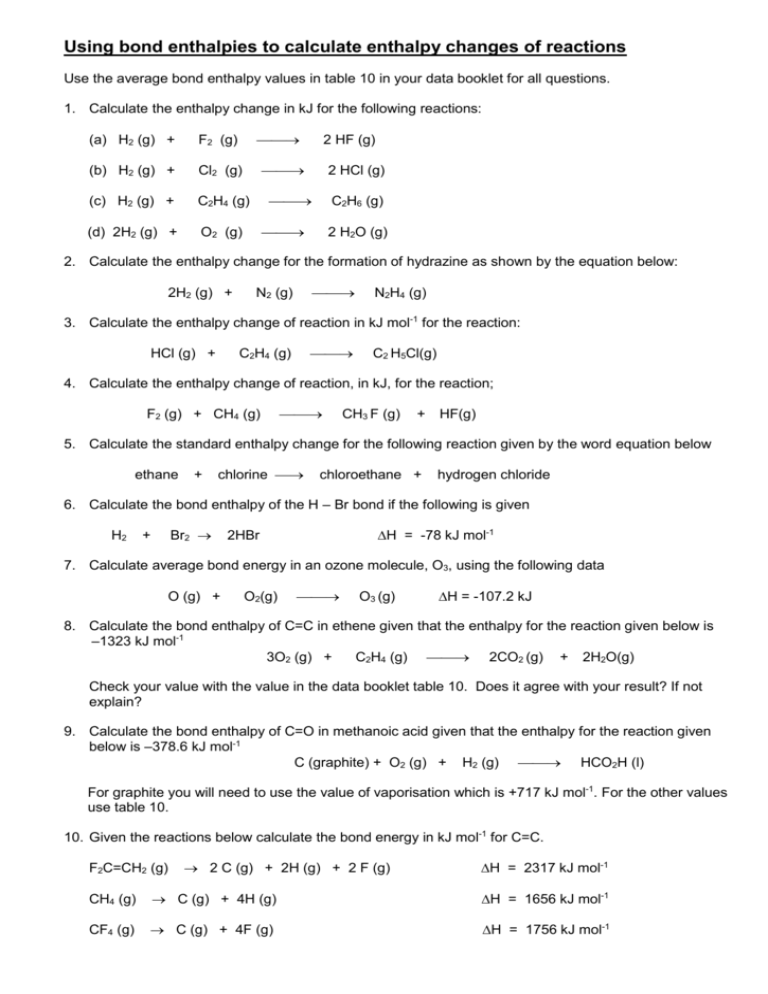
Using bond enthalpies to calculate enthalpy changes of reactions Use the average bond enthalpy values in table 10 in your data booklet for all questions. 1. Calculate the enthalpy change in kJ for the following reactions: (a) H2 (g) + F2 (g) (b) H2 (g) + Cl2 (g) (c) H2 (g) + C2H4 (g) (d) 2H2 (g) + O2 (g) 2 HF (g) 2 HCl (g) C2H6 (g) 2 H2O (g) 2. Calculate the enthalpy change for the formation of hydrazine as shown by the equation below: 2H2 (g) + N2 (g) N2H4 (g) 3. Calculate the enthalpy change of reaction in kJ mol-1 for the reaction: HCl (g) + C2H4 (g) C2 H5Cl(g) 4. Calculate the enthalpy change of reaction, in kJ, for the reaction; F2 (g) + CH4 (g) CH3 F (g) + HF(g) 5. Calculate the standard enthalpy change for the following reaction given by the word equation below ethane + chlorine chloroethane + hydrogen chloride 6. Calculate the bond enthalpy of the H – Br bond if the following is given H2 Br2 + H = -78 kJ mol-1 2HBr 7. Calculate average bond energy in an ozone molecule, O3, using the following data O (g) + O2(g) O3 (g) H = -107.2 kJ 8. Calculate the bond enthalpy of C=C in ethene given that the enthalpy for the reaction given below is –1323 kJ mol-1 3O2 (g) + C2H4 (g) 2CO2 (g) + 2H2O(g) Check your value with the value in the data booklet table 10. Does it agree with your result? If not explain? 9. Calculate the bond enthalpy of C=O in methanoic acid given that the enthalpy for the reaction given below is –378.6 kJ mol-1 C (graphite) + O2 (g) + H2 (g) HCO2H (l) For graphite you will need to use the value of vaporisation which is +717 kJ mol-1. For the other values use table 10. 10. Given the reactions below calculate the bond energy in kJ mol-1 for C=C. F2C=CH2 (g) 2 C (g) + 2H (g) + 2 F (g) H = 2317 kJ mol-1 CH4 (g) C (g) + 4H (g) H = 1656 kJ mol-1 CF4 (g) C (g) + 4F (g) H = 1756 kJ mol-1

